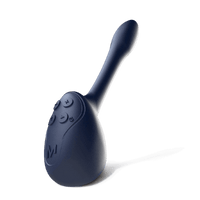BDSM, short for bondage and discipline, dominance and submission, and sadism and masochism, is a term used to describe a variety of sexual practices that involve power exchange between consenting partners. These practices are often misunderstood and stigmatized, but they can be a safe and consensual way for individuals to explore their desires and fantasies. In this article, we will explore the three main BDSM roles: dominant, submissive, and switch, and provide a guide to understanding and exploring each identity.
Dominant identity
A dominant is an individual who enjoys taking control over their partner in a sexual or non-sexual context. Dominants are often referred to as “tops” in BDSM culture, and their role is to guide and direct their submissive partner.
Dominants may use physical restraints, verbal commands, or other forms of power exchange to assert their dominance. However, it is important to note that consent and communication are key components of a healthy BDSM dynamic, and a dominant must always prioritize their partner’s safety and well-being.
Submissive identity
A submissive is an individual who enjoys giving up control to their partner in a sexual or non-sexual context. Submissives are often referred to as “bottoms” in BDSM culture, and their role is to obey and submit to their dominant partner’s commands.
Submissives may enjoy being restrained, humiliated, or punished as part of their BDSM dynamic. However, like with dominants, consent, and communication are crucial for a safe and healthy BDSM experience.
Switch identity
A switch is an individual who enjoys playing both dominant and submissive roles in a BDSM dynamic. Switches are often seen as versatile and adaptable partners, as they are able to switch between roles depending on their mood and desire.
Some switches may prefer to have different partners for each role, while others may enjoy exploring both roles with the same partner. Communication is especially important for switches, as they must clearly communicate their desires and boundaries to each partner.
Exploring BDSM roles
Exploring BDSM roles can be a fun and exciting way to discover new desires and fantasies. However, it is important to approach BDSM with caution and care. Before engaging in any BDSM activities, it is crucial to establish clear communication and consent with your partner. This includes discussing your boundaries, limits, and desires. It is also important to discuss any potential risks or safety concerns and to establish a safe word or signal to use if you need to stop the activity.
In addition to clear communication and consent, it is important to prioritize safety and well-being during BDSM activities. This includes using safe and reliable equipment, such as handcuffs or restraints, that are designed for BDSM use. It is also important to have a plan in case of an emergency, such as a medical issue or unexpected emotional reaction.
Conclusion
Exploring BDSM roles can be a rewarding and fulfilling way to discover new desires and fantasies. However, it is important to approach BDSM with caution and care. Understanding the three main BDSM roles – dominant, submissive, and switch – is an important step in exploring BDSM identity. Whether you identify as a dominant, submissive, or switch, clear communication, consent, and prioritizing safety and well-being are crucial components of a healthy BDSM dynamic. By following these guidelines, individuals can explore BDSM roles in a consensual, safe, and fulfilling way.















































